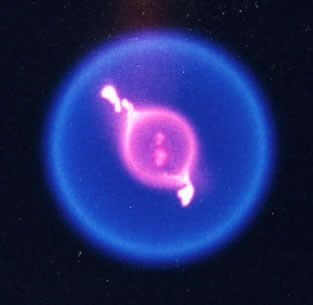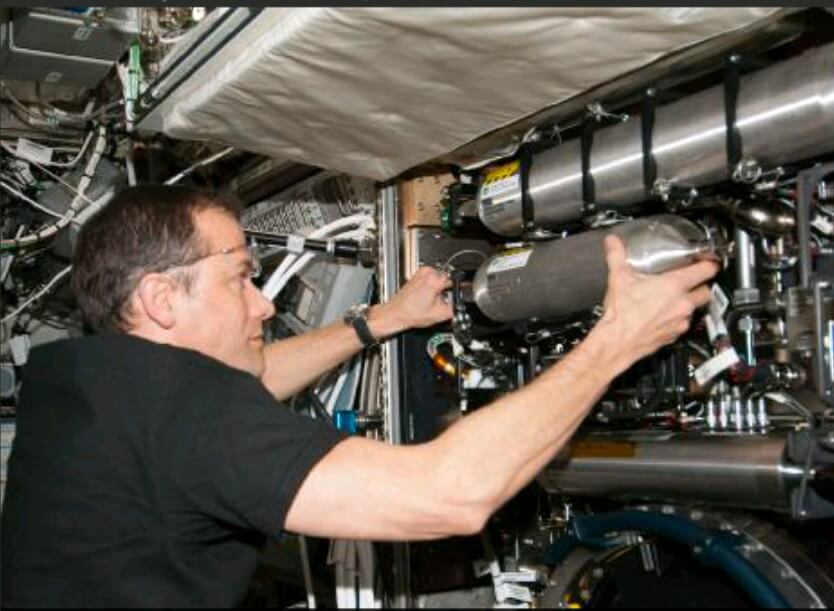An experiment conducted by the astronauts on the space station for scientists who wanted to learn how to control fire. The process they discovered will allow the construction of more efficient vehicle starting systems

Fire is known to be the oldest chemical experiment. For thousands of years, people have mixed the oxygen-rich air with an endless selection of fuels and created hot and bright flames for various uses - from the ancient bonfires of primitive humans to the modern vehicles traveling on the highways of the 21st century.
The engineers learned about combustion to produce the Finnish internal combustion engine. Chemists studied the flames in search of exotic chemical reactions; Chefs experimented with fire to cook better food.
You would think that there is nothing more to learn about fire, but Dr. Furman Williams, Professor of Physics at the University of California, San Diego, disagrees. "When it comes to fire", he said, "we are only at the starting point".
It is difficult to understand what happens in flames because they are complex. In the simple burning of a candle, thousands of chemical reactions occur. Hydrocarbon molecules from the fuse evaporate and break down in the heat. They combine with the oxygen and create light, heat, carbon dioxide and water. Some of the hydrocarbon fragments form ring-like molecules called polycyclic aromatic hydrocarbons and ultimately, soot. The soot particles can themselves burn or simply drift out as smoke. The familiar teardrop configuration of the flame is affected by gravity. Warm air rises and leaves cold air behind. The phenomenon is called "buoyancy" and is the thing that causes the soot to rise up and shake.
But what happens when you light a candle, for example, on the International Space Station? In microgravity, the flames burn in a slightly different way - they form small balls," says Williams.

Fireballs on the space station tend to be excellent mini-laboratories for combustion studies. Unlike flames on Earth, which greedily expand as they demand more and more fuel. The combustion balls allow oxygen to reach them. Oxygen and fuel connect in a narrow area on the surface of the ball, no closer and then passes through the flame. This is a much simpler system.
Williams and his colleagues recently performed an experiment known as FLEX on the International Space Station in order to learn how to start a fire in microgravity and they saw a strange thing: some drops of the hydrocarbons known as heptanes were burning inside the combustion chamber of the FLEX facility. As planned, the flames went out, but unexpectedly, the drops of fuel continued to burn.
"They seem to have continued to burn without flames," says Williams. "At first we didn't believe it ourselves." In fact Williams believes the flames were there, but they were too pale to be seen. "We'll call them cold flames," he explains.
Fire that is visible to our eyes usually burns at high temperatures between 1,500 and 2,000 degrees Kelvin (degrees Kelvin are the same as degrees Celsius, but they start from absolute zero 273.15 below zero). The heptane flame balls on the space station started in the "hot fire" area, however as the flame balls cooled and began to fade, a new type of combustion appeared.
"Cold flames burn at a relatively low temperature of 500-800 degrees Kelvin" says Williams. "Their chemistry is completely different. Normal flames produce soot, carbon dioxide and water. Cold flames produce carbon monoxide and formaldehyde."
Cold flames can be produced on Earth, but they begin to tremble almost immediately. On the space station, cold flames can burn for long minutes. "There are practical implications for the results of this study," says Williams. "For example, they can be used to design cleaner ignition systems for cars."
One of the ideas that car manufacturers have been developing for years is "homogeneous charge compression ignition" (HCCI - acronym for "homogeneous charge compression ignition"). Instead of a spark in the vehicle's cylinder, a gentle and less polluting combustion process will be activated inside the cabin."
"The chemistry of the HCCI includes a reference to the chemistry of the cold flames" says Williams. "The additional control we get from the stable combustion on the space station will give us more accurate chemical values for this type of research."
Indeed, the process has only begun.
For information on the NASA website
A new NASA video in the ScienceCast series explores the surprising behavior of "cold flames" on the International Space Station.

One response
Buoyancy, that is, "floating"